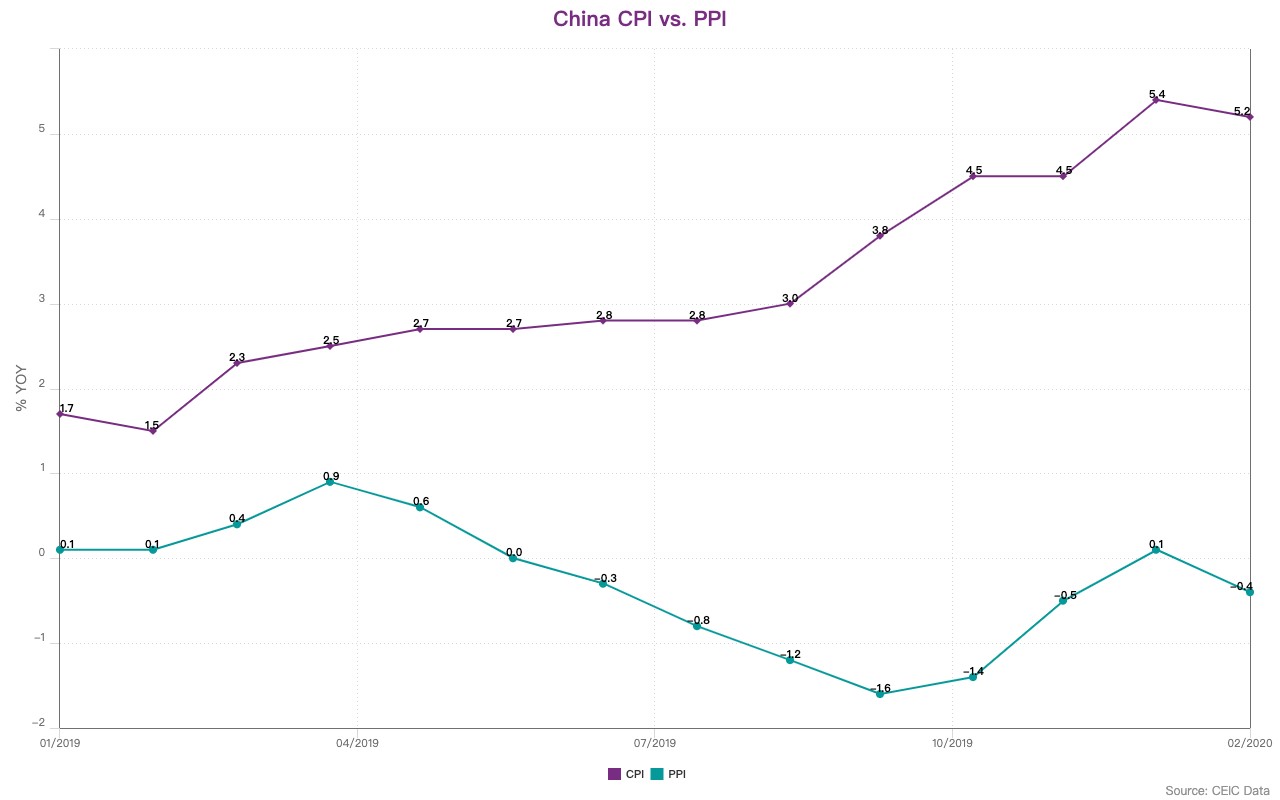China: CPI and PPI


In February 2020, China’s consumer price index (CPI) rose by 5.2% y/y, less than expected and above the 3% y/y annual target. The producer price index (PPI) inched down by 0.4% y/y, in line with the market expectations and signaling deflation pressure.
The rising CPI was mainly driven by a surge in pork prices due to the African swine fever and a rise in vegetables prices, as the outbreak of the new coronavirus Covid-19 intensified in February 2020. This prompted the Chinese government to lockdown Wuhan, the capital city of Hubei province, and to reduce any unnecessary outdoor activities in a bid to control the spread of the virus.

As a result, most of the fresh produce could not be transported to other places and the supply shock pushed the price up. The pork and fresh vegetables prices increased by 235% y/y and 111% y/y, respectively, in February 2020.
Consequently, the food prices rose by 21.9% y/y, compared to a 20.6% y/y rise in January 2020. On the other hand, the core CPI inflation, which excludes food and energy prices, slowed down to 1.0% y/y from 1.5% y/y in January.
The decreasing PPI was mainly caused by the subdued industrial activity due to the outbreak. The producer goods PPI fell further by 1% y/y, compared to a drop of 0.4% y/y in January 2020. The consumer goods PPI rose by 1.4% y/y in February.
Detailed data and analysis on China’s External Sector can be found in the CEIC China Economy in a Snapshot – Q4 2019.